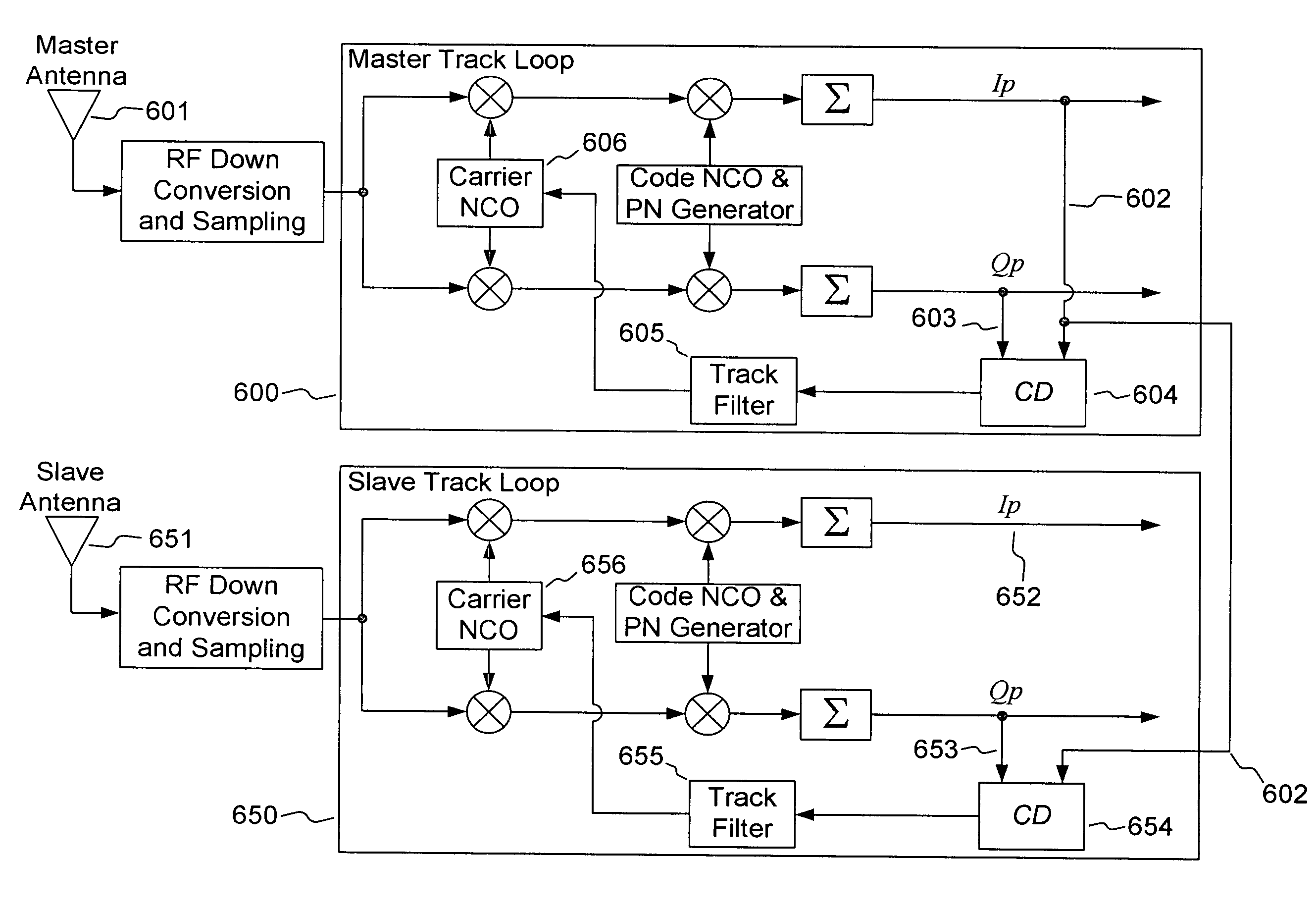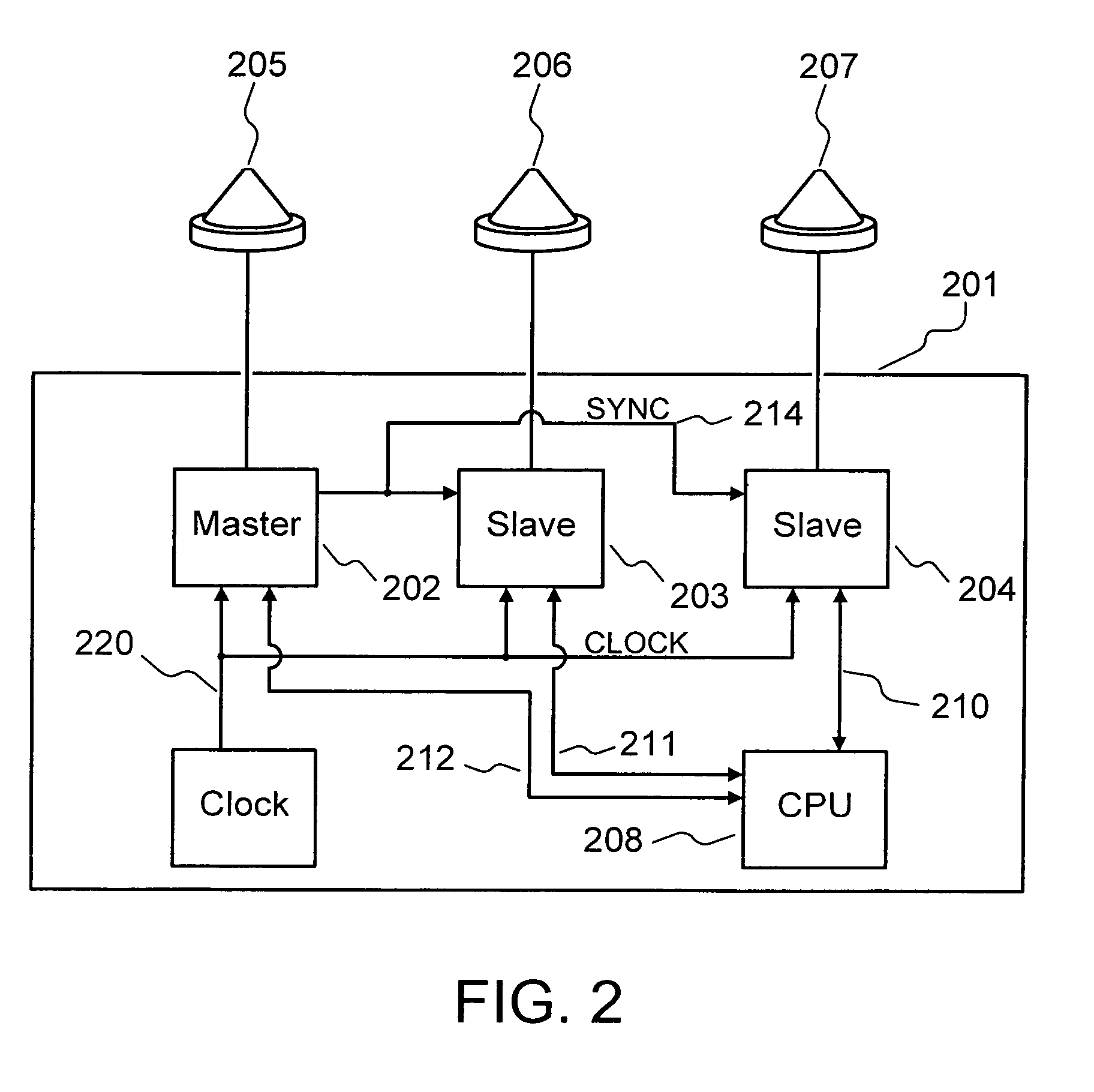Carrier track loop for GNSS derived attitude
a carrier track and attitude technology, applied in the field of precision gnss location or attitude system, can solve the problems of 180 degree phase ambiguity, accuracy, cost, ease of use, etc., and achieve the effect of reducing the ambiguity of the global navigation satellite system (gnss) carrier tracking loop and facilitating a commonality
- Summary
- Abstract
- Description
- Claims
- Application Information
AI Technical Summary
Benefits of technology
Problems solved by technology
Method used
Image
Examples
Embodiment Construction
[0038]An exemplary embodiment of invention features a method and system for attitude determination or other GNSS positioning that significantly reduces the adverse effects of cycle slips and, simultaneously, problems resulting from ½ cycle phase ambiguities, such as may be encountered when employing a tracking loop, e.g., a phase tracking loop.
[0039]A preferred embodiment of the invention, by way of illustration, is described herein as it may be applied to attitude determination. While a preferred embodiment is shown and described by illustration and reference to attitude determination, it will be appreciated by those skilled in the art that the invention is not limited to attitude determination alone and may be applied to control systems, navigation, and the like, as well as combinations thereof. An embodiment of the invention as described herein may readily be applied to attitude determination as described in commonly assigned U.S. patent application Ser. No. 11 / 243,112, entitled ...
PUM
 Login to View More
Login to View More Abstract
Description
Claims
Application Information
 Login to View More
Login to View More - R&D
- Intellectual Property
- Life Sciences
- Materials
- Tech Scout
- Unparalleled Data Quality
- Higher Quality Content
- 60% Fewer Hallucinations
Browse by: Latest US Patents, China's latest patents, Technical Efficacy Thesaurus, Application Domain, Technology Topic, Popular Technical Reports.
© 2025 PatSnap. All rights reserved.Legal|Privacy policy|Modern Slavery Act Transparency Statement|Sitemap|About US| Contact US: help@patsnap.com



